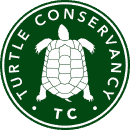Since 1 January 2023, if the amount of the property gain taxable for income tax (« impôt sur le revenu ») purposes exceeds 50,000 EUR, the seller must pay a surcharge ranging from 2% to 6% depending on the amount of the property gain.
Below is a fee schedule contained under the French Tax Code (« Code Général des Impôts ») :
| Amount of property gain (EUR)
(« Montant de la plus-value imposable ») |
Amount of tax (EUR)
(« Montant de la taxe ») |
| From 50.001 EUR to 60,000 EUR | 2% PG – [(60,000 EUR – TG) X 1/20] |
| From 60.001 EUR to 100,000 EUR | 2% PG |
| From 100.001 EUR to 110,000 EUR | 3% PG – [(110,000 EUR – TG) X 1/10] |
| From 110.001 EUR to 150. 000 EUR | 3% PG |
| From 150.001 EUR to 160,000 EUR | 4% PG – [(160,000 EUR – TG) X 15/100] |
| From 160.001 EUR to 200,000 EUR | 4% PG |
| From 200.001 EUR to 210,000 EUR | 5% PG – [(210,000 EUR – TG) X 20/100] |
| From 210.001 EUR to 250,000 EUR | 5% PG |
| From 250.001 EUR to 260,000 EUR | 6% PG – [(260,000 EUR – TG) X 25/100] |
| Above 260,000 EUR | 6% PG |
The tax on certain real estate property is due when the net taxable gain (« plus-value nette imposable ») exceeds 50,000 EUR.
In this case, if the amount of the property gain exceeds 50,000 EUR, the amount of the tax is applied according to the formula set out in the table above.
The acronym «PG » refers to the amount of the property gain (« le montant de la plus-value imposable »).
For example, if the amount of your property gain exceeds 50,000 EUR and you want to calculate the amount of tax that you will have to pay in accordance with the amount of the property gain :
2% of 50,000 EUR – [(60,000 EUR – 50,000 EUR) X 1/20]
= 1.000 EUR – ([10,000 EUR ) X 0.05]
= 1.000 EUR – 500 EUR
= 500 EUR
Then, if the amount of your property gain exceeds 50,000 EUR, the amount of the tax will be 500 EUR.
However, the capital gain realized on the sale of the main residence is not taxable.
It must be your usual and effective principal residence (« résidence principale »).
For example, the one you occupy for most of the year.
Thus, the temporary use of a property, particularly just before its sale, will not allow you to benefit from the exemption.
It must also be your principal residence (« résidence principale ») on the day of the sale.
However, if you have already left the property on the day of the sale, you can still benefit from the exemption provided that you have occupied it until the day it is put up for sale and that the sale takes place within a normal period of time (in principle one year).
In addition, there are grounds for exemption. Capital gains on real estate are exempt if :
— The property has been owned for more than 22 years ;
— The property sold is the seller’s principal residence on the day of the sale ;
— The seller is a non-resident ;
— The sale price is reused by the seller to buy or build a home used as a principal residence (« résidence principale ») within 24 months. The seller must not have been the owner of his or her main residence during the four years preceding the sale ;
— The property sold is a right of elevation. The capital gain is exempt provided that the buyer has finished the premises intended for habitation before 31 December 2022.
The property gain realized on the sale of a second home is subject to income tax (« impôt sur le revenu ») at a rate of 19% and social security contributions (« charges sociales ») at a rate of 17.2%.
The tax rate on property gains from the sale of second homes is therefore 36.2%.
Example :
Mr. Jean is going to sell his rental property.
It is not his main residence. He bought it for 150,000 EUR and is selling it for 300,000 EUR.
He has owned it for 11 years and 9 months.
The notary fees were 4,000 EUR and all the work done was deductible from the rent.
He has done of 3,000 EUR for various diagnostics.
What will he pay on the capital gain ?
1: Calculation of the gross property gain (« capital immobilier brut » :
Mr. Jean can increase his purchase price by 7.5% or by the notary fees paid.
The 7.5% option is better because Mr. Jean can also include the works.
As he is not allowed to include those deducted from taxes, he will use the 15% lump sum (« montant forfaitaire ») which is possible as he has owned the property for more than 5 years.
He can also deduct the expenses incurred by selling the property.
2- Calculation of the taxable capital gain : Allowance for length of ownership :
The tax authorities take into account 11 years of ownership.
The deduction for holding time is 6% per year from the sixth year for income tax purposes.
This gives 6% X 6 years = 36% allowance.
The taxable property gain for income tax is :
113.250 EUR – (113.250 EUR * 36%)
= 113.250 EUR – (113.250 EUR X 0,36)
= 113.250 EUR – 40.770 EUR
= 72.480 EUR.
The deduction for the length of ownership is not the same for social security contributions (« cotisations sociales »).
It is 1.65% per year for 6 years (for example, 9.9%).
The capital gain taxable for social security contributions (« cotisations sociales ») is :
113.250 EUR – (11.250 EUR X 9.9%)
= 113.250 EUR – (11.250 EUR X 0.099)
= 113.250 EUR – 11.137,5 EUR
= 102.112,5 EUR.
3- Calculation of tax and social security contributions (« cotisations sociales ») :
Income tax is 19% and is applied to the taxable property gain of 72.480 EUR.
You have to pay : 72.480 EUR X 19%
= 72.480 EUR X 0.19
= 13.771,2 EUR.
Social security contributions (« cotisations sociales ») are 17.2% to be paid on the other taxable base of 102.112,5 EUR.
You must also pay : 17.2% X 102.112,5 EUR
= 0.172 × 102.112,5 EUR
= 17,563.35 EUR.
4- Additional tax for real estate property gains :
Here, the property gain taxable for income tax is 72.480 EUR.
This is above the 5,000 EUR threshold (« abattement »).
According to the fee schedule, if the capital gain is between 60,000 EUR and 100,000 EUR : 2% X the amount of property gain must be paid.
This gives 72.480 X 2%
= 72.480 × 0.02
= 1.449,6 EUR
Mr Jean will pay a total of 13.771,2 EUR + 17,563.35 EUR + 1.449,6 EUR
= 32,784.15 EUR.
It should be noted, however, that the property gain realized on the sale of a secondary residence (« résidence secondaire ») is exempt provided that the seller :
— Has not owned his or her main residence during the 4 years preceding the sale ;
— Has used the proceeds of the sale to acquire or build his or her principal residence (« résidence principale ») within 4 years of the sale.
If the seller has only reused part of the sale price of his property, the exemption is proportional to the fraction that he has reinvested.
When calculating the property gain, an allowance for the length of time the property has been held is applied.
Its calculation methods differ according to the property gain taxable under income tax (« impôt sur le revenu ») (19%) or social security contributions (« cotisations sociales ») (17.2% as of 1 January 2018).
For income tax (« impôt sur le revenu ») purposes, the allowance is :
— 6% for each year of ownership after the 5th and up to the 21st years ;
— 4% for the 22 year of ownership ;
The total exemption of property gains on real estate for income tax (« impôt sur le revenu ») purposes is thus acquired at the end of a twenty-two-year holding period.










